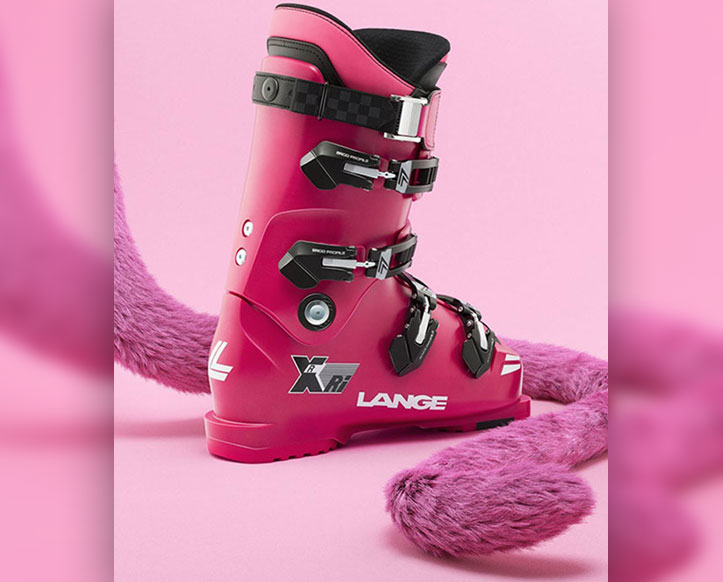11 January 2021
HOW TO CHOOSE THE RIGHT SKI BOOTS?

THE SECRET TO FULLY ENJOY THE SLOPES
Who has never complained about their ski boots at the top of the snowy slopes? We’ve all experienced that feeling of frozen feet or the desire to take a break to air out your toes, or even sometimes regret having to cut your skiing day short.
And yet, there is a way to make your skiing days much more enjoyable. All too often overlooked and yet essential, the choice of our ski boots can really make a difference.
But among all these models, how do we choose the one that suits us? Don’t panic, we explain everything!
We called upon Laurent Tacussel, bootfitter & Bootfitting training manager, who will guide us to find the best ski boots to face the winter without apprehension.
Why is choice so important?
The foot profiles are unique, it is impossible to make a ski boot that fits everyone.
The types of skiers are also very varied. Some will primarily want comfort, with boots that are easy to put on and take off, others will want performance or both.
As a general rule, we shorten our skiing day because of discomfort, cold or fatigue. Fortunately, it is possible to optimize your pair of boots by modifying them quite significantly. With medium-cost solutions, you can increase your comfort and therefore your performance.Here are the 4 steps to increase your comfort and performance on skis:
1. Find the shell that suits you
It is essential to make a good analysis of the foot, ideally by a specialist. It includes: Mondopoint measurement of the foot, lateral and metatarsal width measurements, height of the neck of the foot and the shape of the heel.
More and more stores are equipping themselves with 3D scanners for unstoppable measurements. They scan the foot in 3D with the support distributions. Precise and flawless measurements, that’s the future!
Do not hesitate to let the specialist know your level, he will adapt the choice of hull according to your needs.
2. Choose a custom sole
Once the choice of the shell has been made, the foot must be stabilized thanks to the insoles, preferably personalized. They play 80% on comfort!
Our feet work in length, width and bending. Insoles molded to your foot are an excellent way to avoid instability. They will support and control the foot, while distributing support. In addition to providing comfort, they will stabilize our movements and adapt to our foot type (sagging, neutral or arched).
Our foot, having 100% support with the sole, can then relax and feel less fatigue during a ski session.
3. Make the right choice of liners
You have the choice between 3 types of slippers: the standard (that of the brand of the shoe), the thermoformed (that we pass in the oven to mold it to your foot) and the injected slipper (100% molded on the shape of your foot).
The thermoformed liner is molded to the shape of the foot. It brings insulation and lightness while maximizing comfort.
The injected shoe combines comfort and performance. Thanks to the molding process, there is little space left between your foot and the shoe. Their customization is optimized and will therefore make a difference in terms of comfort (PUcomfort) or performance (PU Race). Small reminder: It is preferable to mold a slipper with a pair of soles, this one increases significantly the quality of comfort and the result of the footwear. You can’t build a house without foundations !
4. Don’t underestimate your socks
The quality of the socks plays a much more important role than you might think. They will be able to regulate the temperature inside the shoe and thus fight the cold. They have to be technical (cotton is banned!), anatomical (with a distinct left and right foot) and adapted to your size.
Please note: the thicker the sock, the more sensations are lost.
The ideal: a thin but warm andbreathablesock.
ALERT to the mistakes you should not make for your ski boots
✖ – I take one size above my shoe size for comfort.
✓ – When the shoe is too large in length and volume, the heel lifts and the stability of the foot is compromised. This decreases the skier’s performance and can lead to early fatigue.
It’s a simple thing to do: I measure my foot and I orient myself towards the size that fits me. The choice of the shell, the sole and the personalized shoe will do the rest!
✖ – I try on my shoes sitting on the bench
✓ – To try on a ski boot in an optimal way: stand up, in flexion, with the hooks closed and with adapted socks.
✖ – I don’t dry my ski boots
✓ – When you dry your shoes, you avoid premature wear and tear and the proliferation of bacteria created by a wet and cold shoe. You can either take the shoe and sole out to dry overnight or use small electric drying appliances. They do not alter the slippers and have an antibacterial and sanitizing action. I highly recommend!
✖ – I continue to ski without controlling my equipment
✓ – Ski boots wear out and “plastic” components are sensitive to UVA / UVB. It is important to have your equipment checked once a year, mainly on the condition of the hooks and the wear pads for the safety of the bindings.
5- Trust the specialists
If you want to be correctly oriented towards the type of product adapted to your practice, nothing beats the advice of specialists in sports stores. They are trained and labeled on our premises to master the techniques and will be truly attentive to your needs.
The sales or bootfitter technicians will analyze your feet and recommend the right shoe model. They will also be able to mold insoles and slippers to your feet and make shell deformations, if necessary.